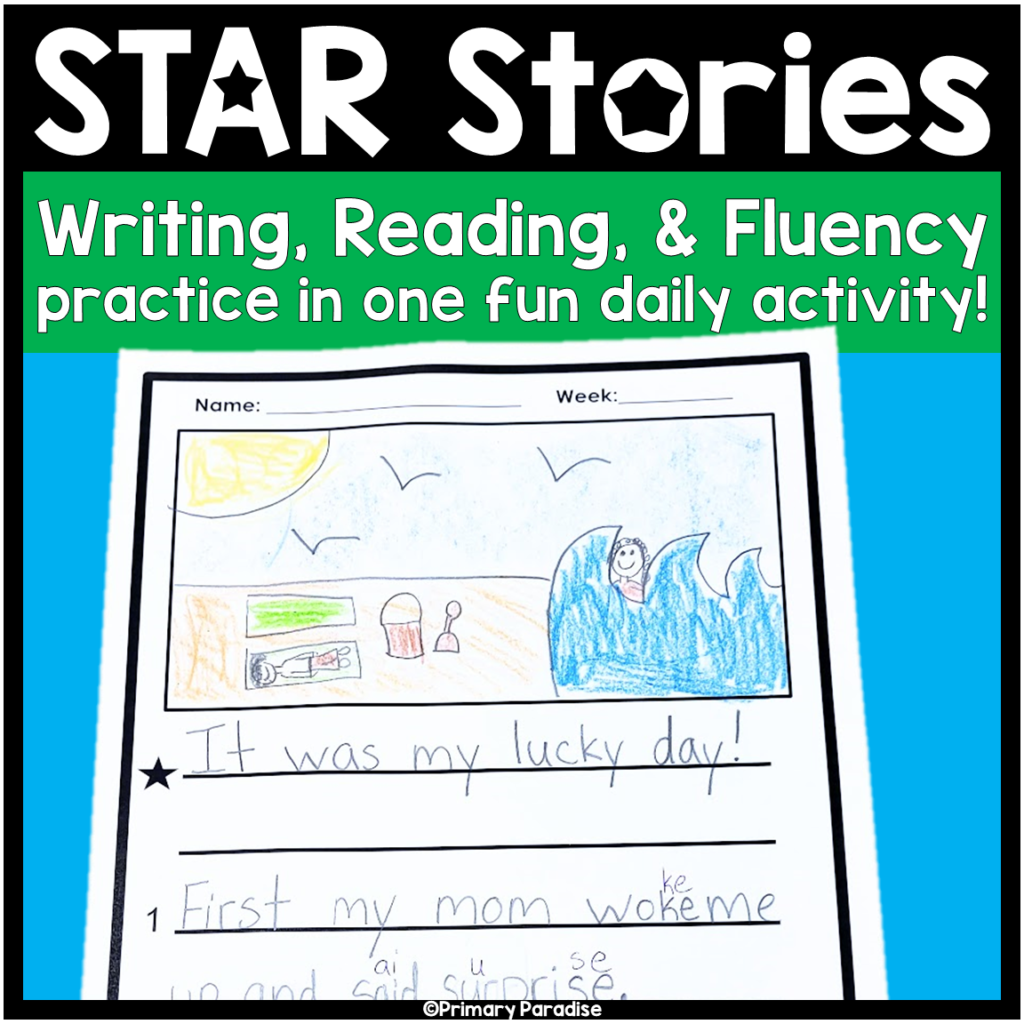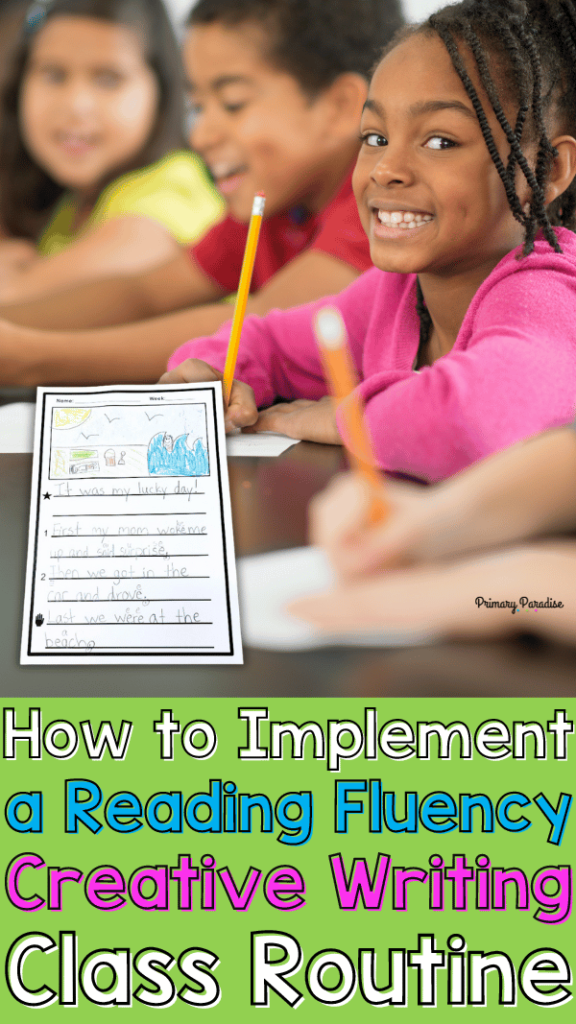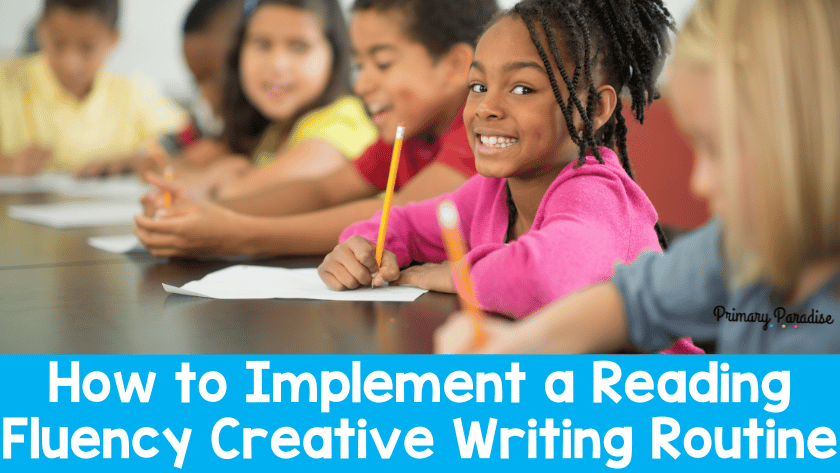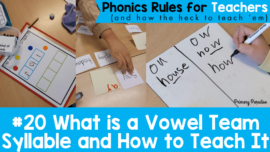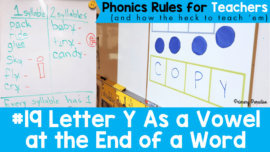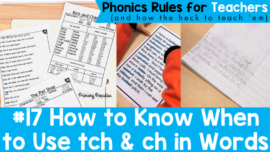Many students in the primary grades struggle with writing stories and reading with fluency. When I noticed that my first graders had mastered writing a good, basic sentence, but couldn’t string a few together, I knew a needed to find a solution. They also needed to work on their reading fluency, so I decided to solve both problems at once: enter Star Stories! You can use the Star Stories creative writing routine in your classroom to help your students develop their writing and fluency skills in 10 minutes a day. Let’s take a look at how and why this routine works so well.
What are Star Stories?
Star Stories is not just a daily, creative writing routine; it’s week long, scaffolded writing and fluency practice that weaves together the threads of writing, reading, fluency, and presenting. Star Stories helps students create a story, one day, one sentence at a time. It takes them through the editing and publication process, and allows them to build confidence as a writer and reader along the way. It’s the perfect morning work or bellringer activity that engages students in a these skills that are essential for their growth.
Star Stories at a Glance
Let’s take a quick look at the skills this creative writing routine focuses on:
- Sentence Writing: Crafting complete sentences, and over time working to expand sentences.
- Handwriting and Spacing: Practice makes perfect!
- Spelling with Letter Sound Knowledge: Building a foundation for spelling through sound mastery and practical application of known sounds.
- Understanding Story Structure: Learning the art of storytelling and narrative flow in a simple way.
- Creativity: Giving students a starting point, but allowing them to get as creative as possible.
- Reading Fluency: Giving students the ability to have repeat reads on their own writing to boost confidence.
- Public Speaking: Fostering confidence in presenting thoughts to an audience.
- Listening and Being a Good Audience Member: Cultivating attentive listening and positive feedback skills.
How to Implement the Star Stories Creative Writing Routine in Your Classroom
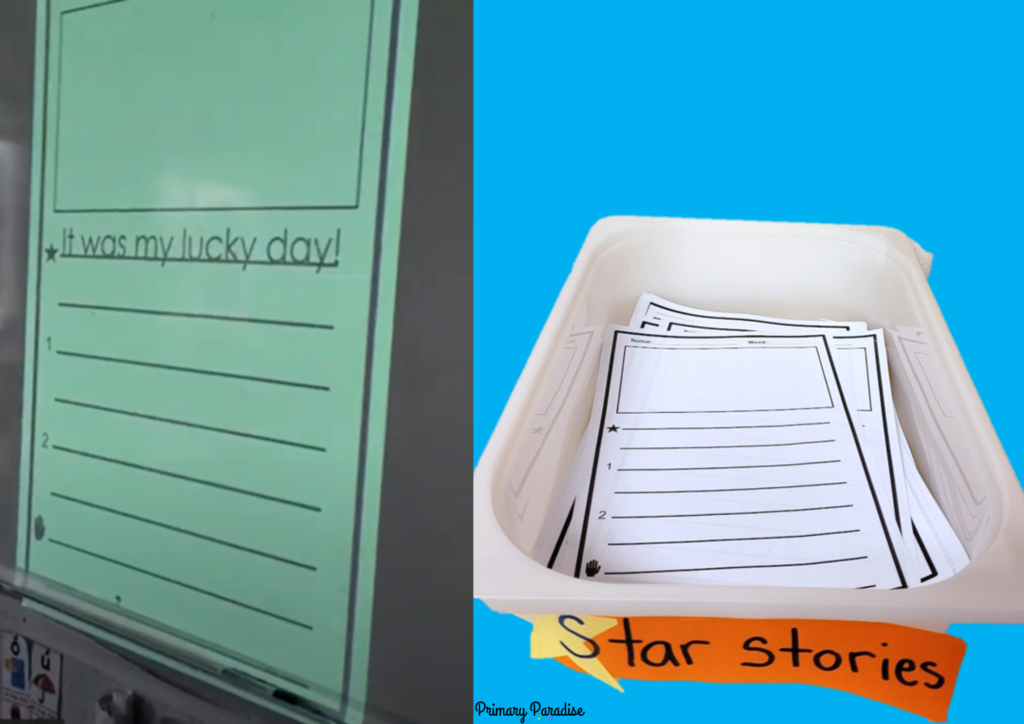
You should take a little time each day to complete this writing routine. It works as a great way to start the day, and only takes about 10 minutes. Here is what you do each day.
Star Story Routine
Day 1
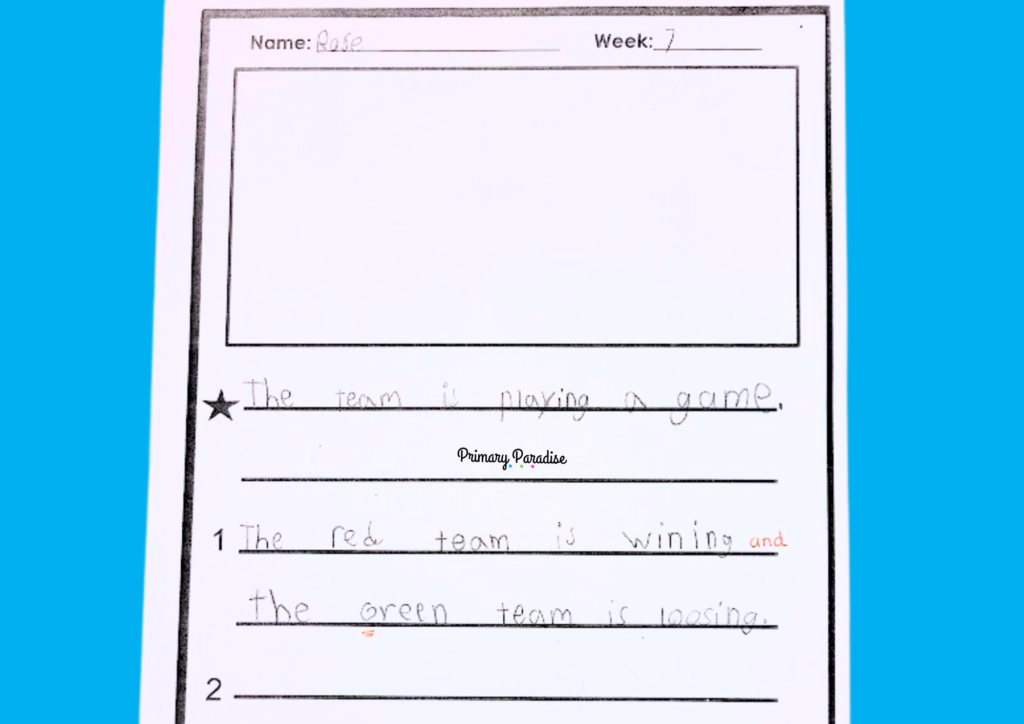
Students are given a star sentence to begin their story. You can display this on the screen. It works best to create sentences using only words and sounds your students have been explicitly taught.
Students copy their star sentence. Then, at the number 1 space, they write the next sentence in their story. They can take the story in whatever direction they want to, as long as it makes sense. Next, they should read their sentences aloud to themselves. When they finish, they can begin drawing a picture to go along with their story.
Day 2 and 3
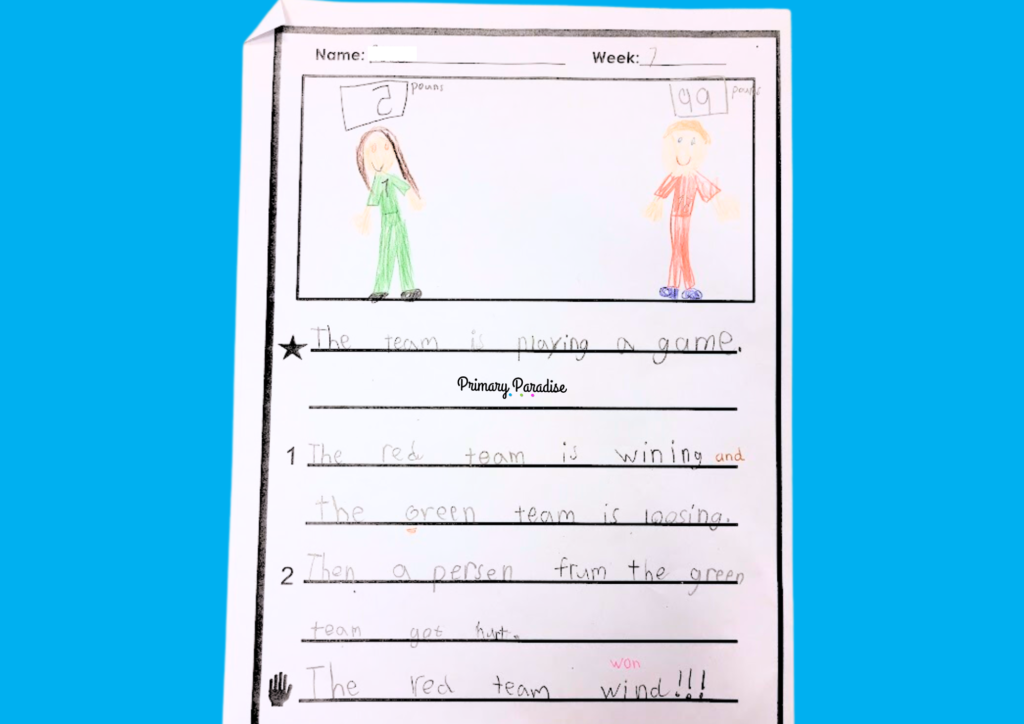
On both day 2 and 3, students add a second and then an ending sentence to their Star Stories. Each day when they finish writing, they read their story to themselves from the beginning, and then work on a picture to go along with their story.
While they’re working, you can quickly edit their work in pen, and then they erase and make the correction in pencil. If you do this, you can see what things they needed to correct which helps me know which areas we still need to work on. Alternatively, you can make the corrections after school before day 4.
Day 4
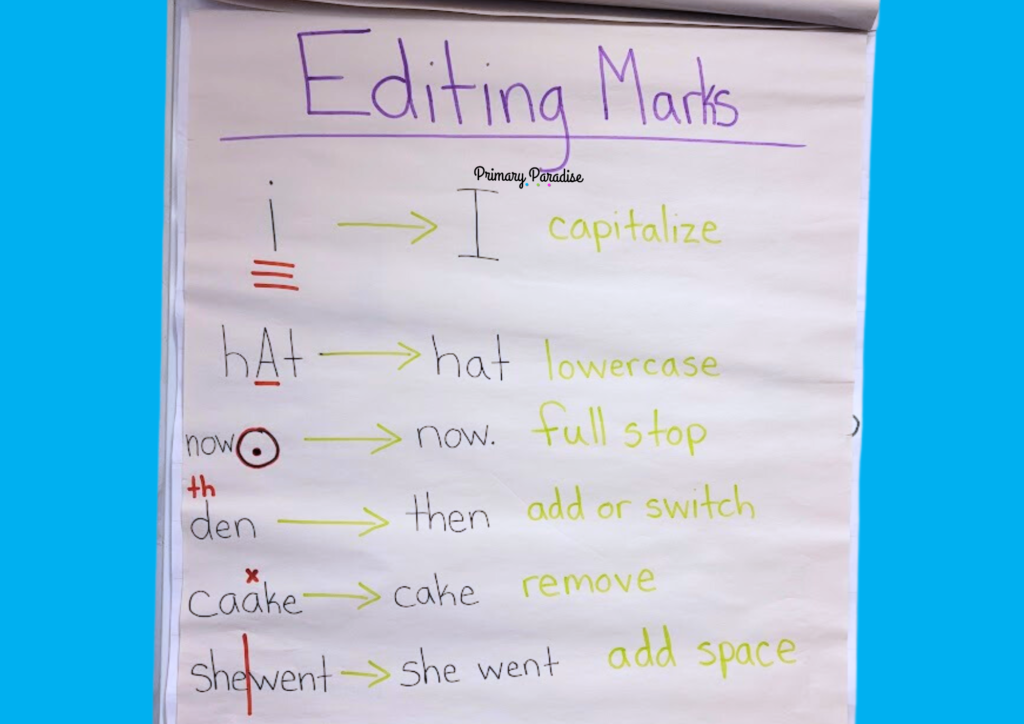
Your students can start by making any corrections to their story. While I typically don’t correct my students’ spelling in first grade in their journals, since they’re using their writing for reading fluency practice, I make sure everything is spelling correctly. Your students can then take their completed, corrected story and practice reading it with a partner. Each student finds a partner, and they take turns reading and listening for about ten minutes. This helps prepare them for the star story showcase so they feel confident and ready.
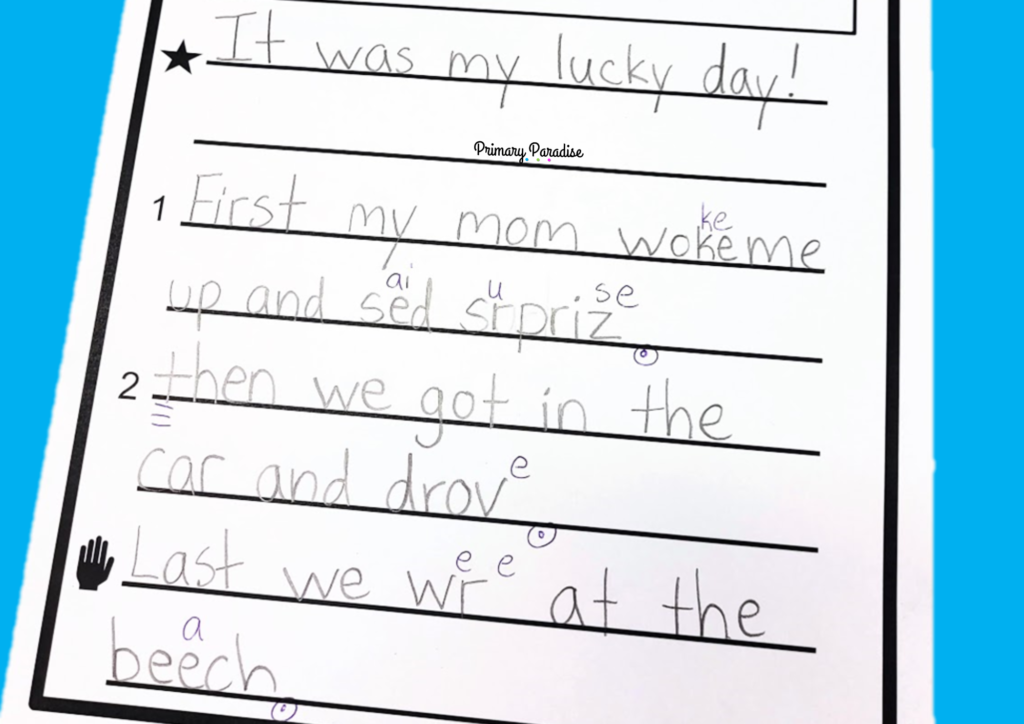
Day 5
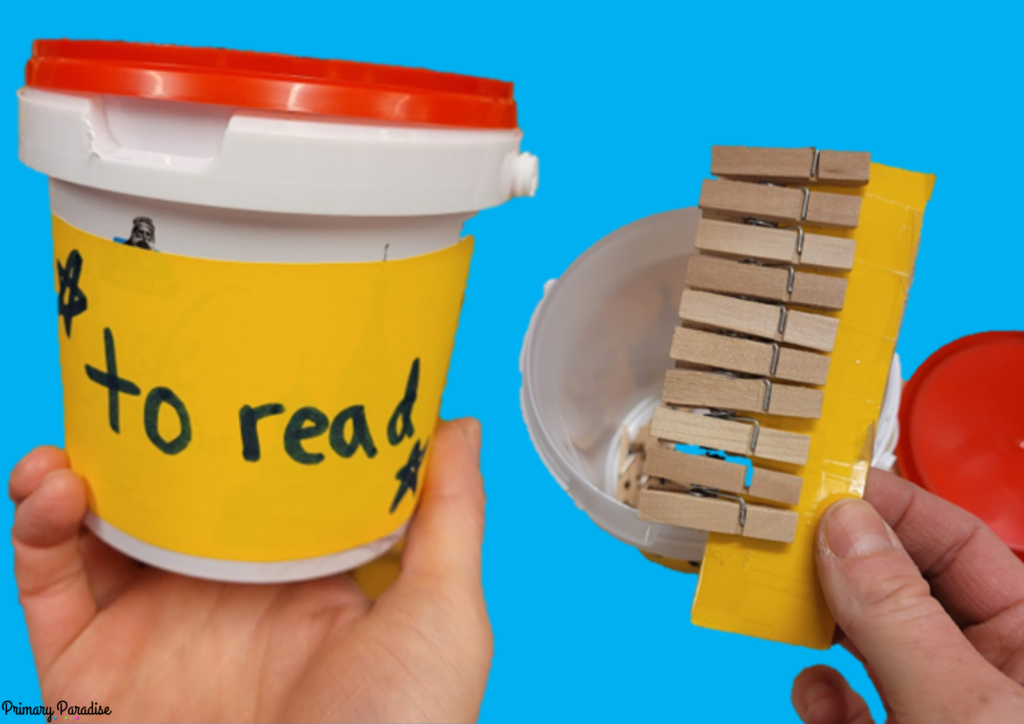
On day five, it’s time for your star story showcase! Place each student’s name on a clothes pin and pull out five each week. Those five students read their story in front of the class. It’s important to emphasize the importance of speaking clearly, loudly, and with expression. The rest of the class has the opportunity to give compliments and feedback after their friends share. Once children have shared, you can move their clothespin to a cardboard strip until everyone has had a turn. Then, all of the pins go back into the bucket.
To make it extra fun when pulling names, you can turn off the light, turn on a fun disco light, and/or play exciting music while you announce who will be sharing this week. After students share their story during the Star Story Showcase, they get to choose a star sticker to put on their chart. You could also have them color in a sticker.
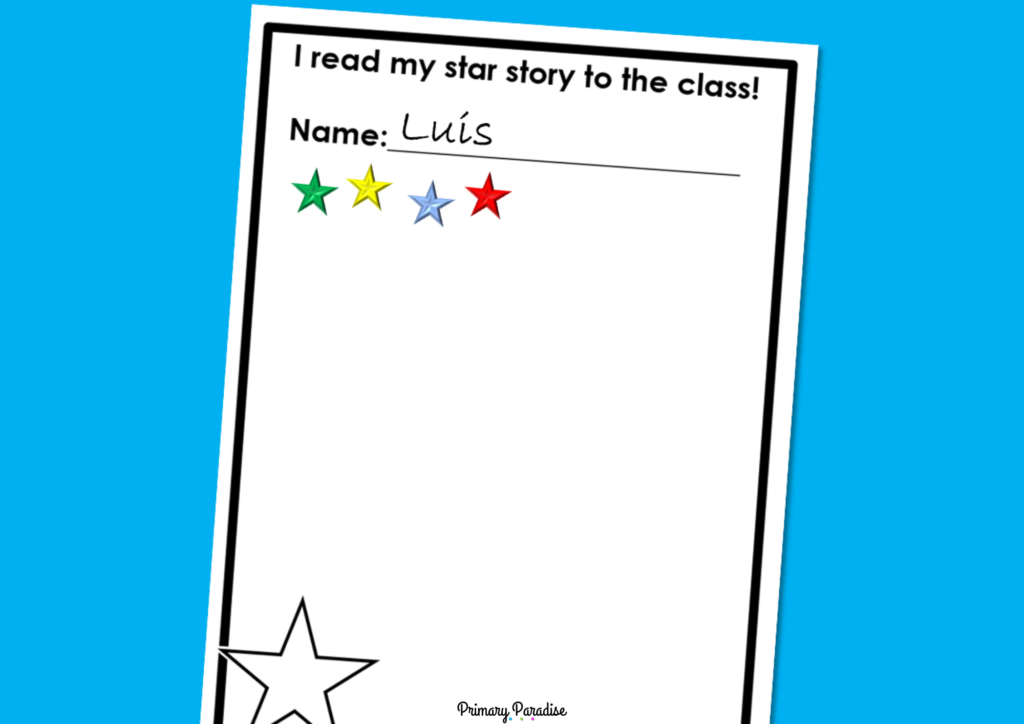
They then place their Start Story in a plastic sleeve. This keeps them all together, with the tracking sheet in the back facing out, so they can see their progress as the weeks go on! At the end of the year, they can see how much their writing has progressed over time!
The Creative Writing Routine and Fluency Practice Every Primary Teacher Needs
As primary grade teachers, we hold the wand to unlock creativity and nurture skills in our students. Star Stories have been a stellar addition to many classrooms, including my own! If you’d like to give it a try in your classroom and watch your students become shining star story tellers, you can find the templates and everything you need here on TpT or here in my website shop. May your classrooms be filled with the magic confident readers and writers.
